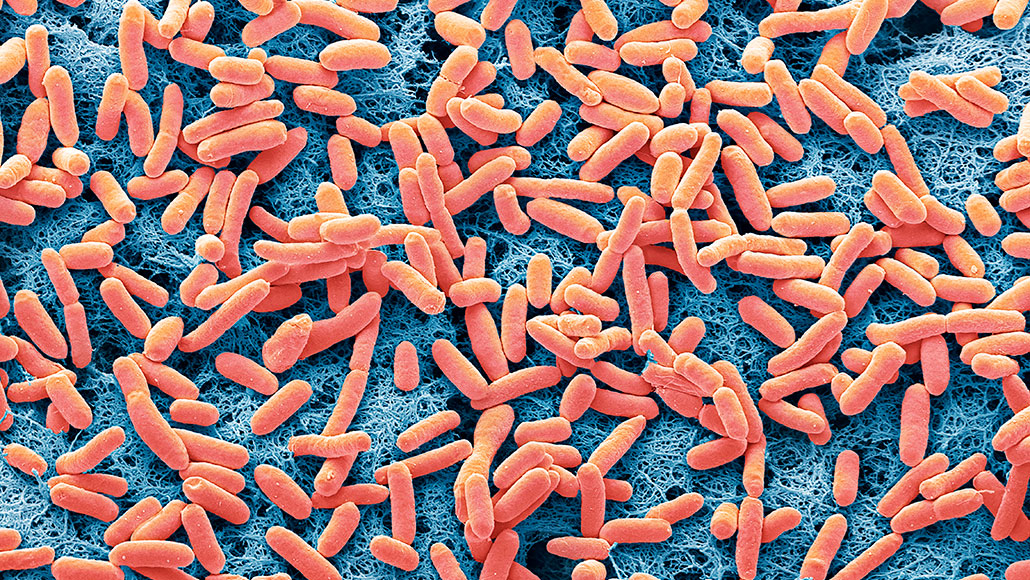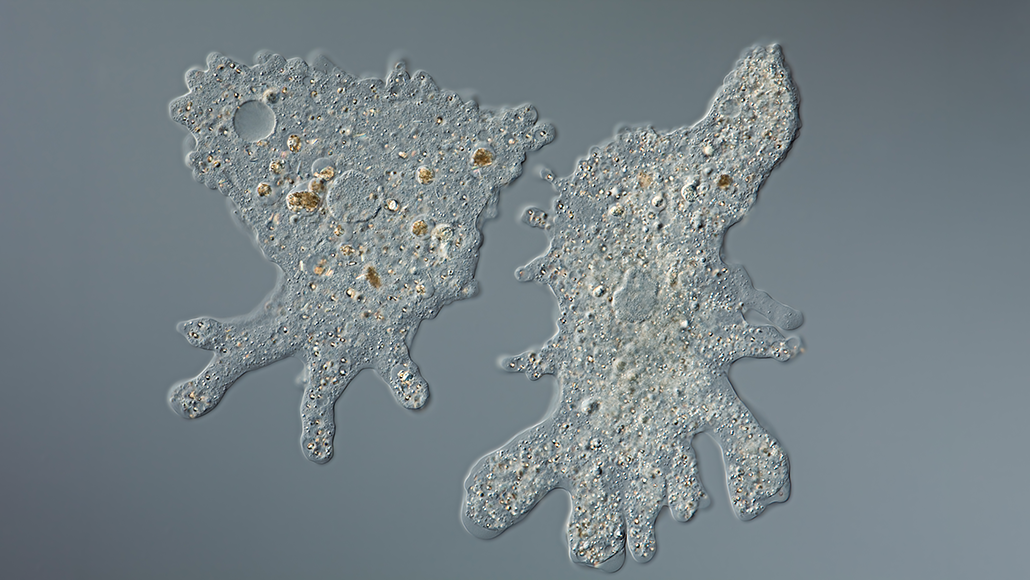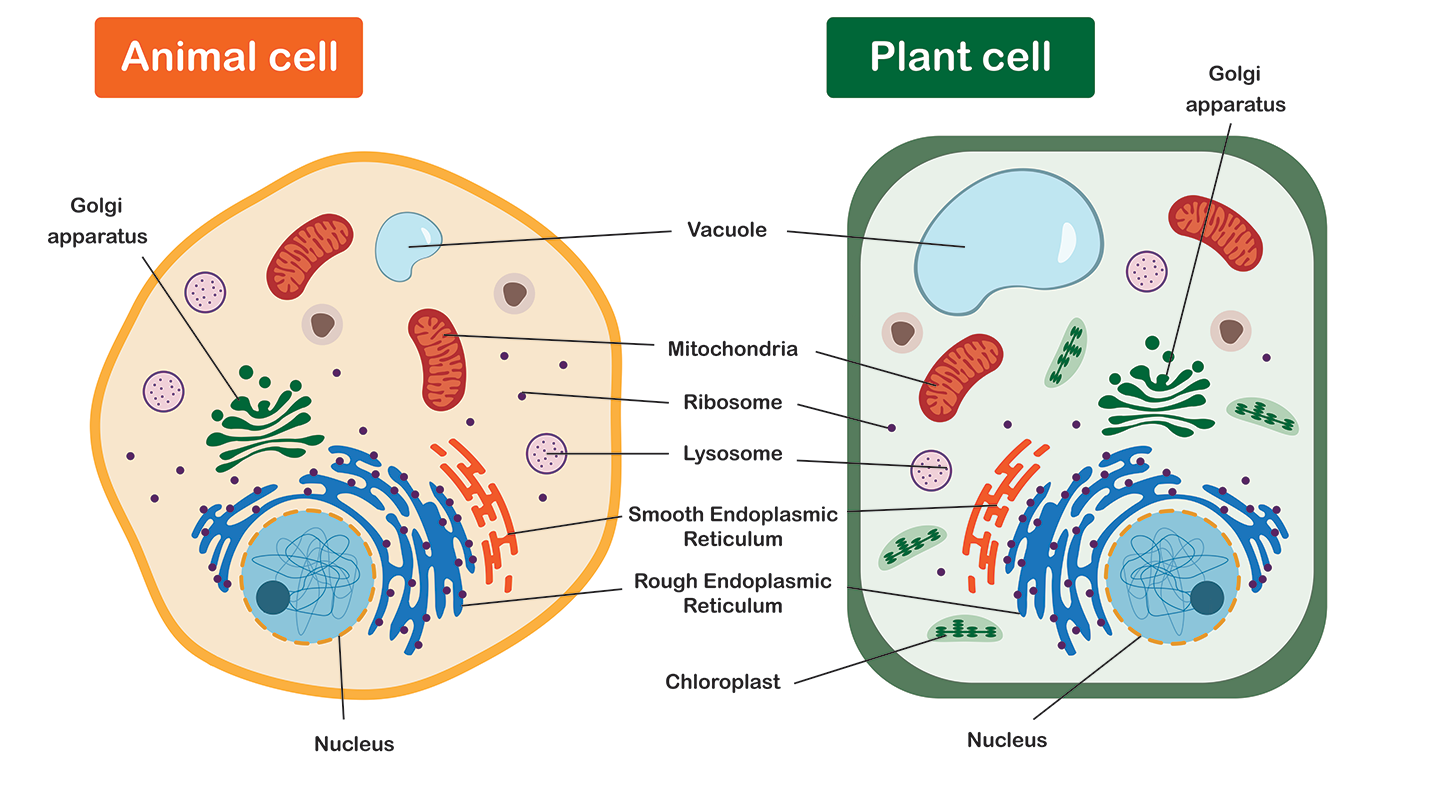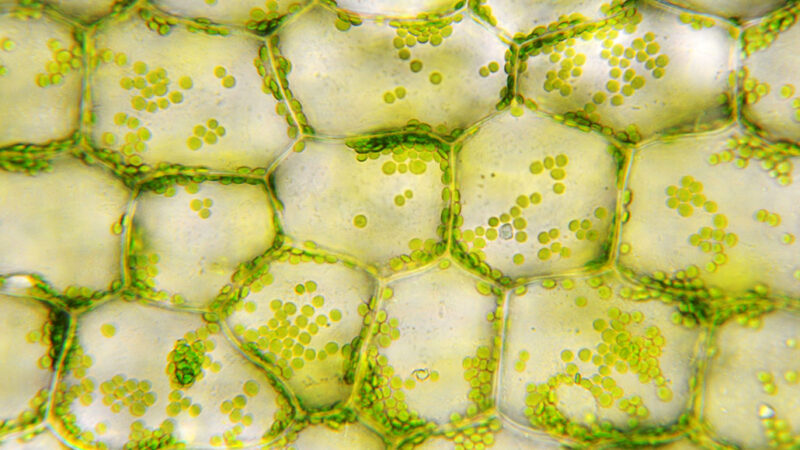How Do Plants And Animals Make New Cells
Take a expect at your all-time friend, your dog — or even a snail using its muscular foot to move upward the stalk of a blossom. All of them look quite different. And that'southward due to the highly organized cells from which they're made. The man torso has roughly 37 trillion cells.

Most living things, however, are non multicellular. They consist of a unmarried jail cell. Such unicellular organisms generally are and then minor that nosotros'd need a microscope to see them. Bacteria are among the simplest single-celled organisms. Protozoa, such as amoebas, are more complex types of i-celled life.
A jail cell is the smallest living unit. Inside every cell is a host of structures known as organelles. "Every cell has essential structures that are the aforementioned, like every house has a kitchen sink and a bed. Just how big and complex they are, and how many of them there are, is going to vary from cell blazon to cell type," says Katherine Thompson-Peer. She's a cell biologist at the University of California, Irvine.
If cells were homes, the simplest ones — prokaryotes (Pro-KAER-ee-oats) — would be one-room studio apartments. The kitchen, bedroom and living room would all share one space, explains Thompson-Peer. With few organelles, and all of them side by side to each other, activities all take place in the middle of these cells.
Over time, some cells became more complex. Chosen eukaryotes (Yu-KAER-ee-oats), these now brand upward animals, plants and fungi. Some one-celled organisms, such as yeasts, also are eukaryotes. These cells are all similar single-family houses — with walls and doors making up separate rooms. A membrane encloses each organelle in these cells. Those membranes "segregate different things that the cell does into different compartments," explains Thompson-Peer.
The nucleus is the most important organelle in these cells. It houses a eukaryotic cell's DNA. It's also what distinguishes these cells from prokaryotes. Even i-celled eukaryotes, such as the amoeba, have a nucleus. Simply cellular complexity is most obvious in multi-celled organisms. If we follow the house illustration, a multi-celled organism would be a high-rising apartment building, says Thompson-Peer. It contains lots of homes — cells. "And they're all a petty bit different in terms of shape. But they all work together to be a edifice."

Cells from organisms big and small include:
a cell membrane (also chosen a plasma membrane). This sparse, protective outer layer surrounds a cell, similar the outer walls of a house. It protects the structures within and keeps their environment stable. This membrane also is somewhat permeable. That means information technology allows some things to move into and out of a jail cell. Call back of windows in a house with screens. These let air catamenia in just keep unwanted critters out. In a cell, this membrane allows nutrients in and unwanted wastes to leave.
ribosomes. These are little factories that make proteins. Proteins are important to every function of life. We need proteins to abound, to repair an injury and to transport nutrients and oxygen in our bodies. To build proteins, a ribosome binds to a specific part of a jail cell's genetic textile known as messenger RNA. This allows it to read the instructions telling this factory which edifice blocks — chosen amino acids — to assemble in making a protein.
Deoxyribonucleic acid. Every organism has a genetic lawmaking called DNA. That's short for deoxyribonucleic (Dee-OX-ee-ry-boh new-KLAY-ick) acid. It's like a huge instruction manual, telling cells what to do, how and when. All that information is stored in nucleotides (NU-klee-uh-tides). These are chemical building blocks fabricated of nitrogen, saccharide and phosphate. When new cells develop, they make an exact copy of the onetime cells' Deoxyribonucleic acid so the new ones know what tasks they'll be expected to do.
Every cell in an organism's body has the same Dna. Notwithstanding those cells can look and office quite differently. And here's why: Different cell types admission and use dissimilar parts of the DNA instruction book. For example, an middle prison cell is translating the parts of its DNA that tell it how to brand eye-specific proteins. Similarly, a liver cell translates the sections of DNA that tell it how to make liver-specific proteins, explains Thompson-Peer.
You might think of DNA as the script for a play, she says. All the actors in Shakespeare's Romeo and Juliet have the same script. Yet Romeo reads only his lines, Thompson-Peer says, before going off to practice Romeo things. Juliet reads only her lines and then goes off and does Juliet things.

Fundamental features of cells from multi-celled organisms include:
a nucleus. The nucleus is a protective membrane surrounding a cell's Deoxyribonucleic acid. It keeps this genetic "instruction manual" safe from molecules that could impairment it. The presence of a nucleus is what makes a eukaryotic cell unlike from a prokaryotic one.
endoplasmic reticulum (En-doh-PLAZ-mik Reh-TIK-yoo-lum). This place, where a jail cell makes proteins and fats, has a long proper noun. But you tin can telephone call it "ER" for short. Information technology's a apartment sail that gets folded tightly dorsum and forth. Those known as rough ERs makes proteins. The ribosomes that adhere to this ER give it that "rough" appearance. Smooth ERs make not only lipids (fatty compounds such as oils, waxes, hormones and most parts of the jail cell membrane) but also cholesterol (a waxy textile in plants and animals). Those proteins and other materials become packaged into tiny sacs that pinch off from the edge of the ER. These important products of cells are and so transported to the Golgi (GOAL-jee) appliance.
Golgi appliance. This organelle modifies proteins and lipids in much the same style auto parts are added to the body of a automobile in the factory'southward associates line. For example, some proteins demand carbohydrates fastened to them. After these additions are made, the Golgi apparatus packages up the modified proteins and lipids, so ships them in sacs known as vesicles to where they will be needed in the body. It'southward like a post function that receives lots of mail for different people. The Golgi apparatus sorts the cellular "mail" and delivers information technology to the proper trunk accost.
cytoskeleton. This network of tiny fibers and filaments provides structure to a cell. It's like the frame of a house. Different cells have different shapes and structures based on their part. For instance, a muscle prison cell has a long, cylindrical structure so that it can contract.
mitochondria. These power generators of the cell break downwardly sugars to release their energy. Then the mitochondria (My-toh-KON-dree-uh) package that energy into a molecule called ATP. It's the form of energy that cells use to power their activities.
lysosomes. These organelles are the cell's recycling centers. They suspension down and digest nutrients, waste matter or old parts of the jail cell that are no longer needed. If a prison cell is as well damaged to repair, lysosomes assist the jail cell destroy itself past breaking down and digesting all the structural supports as well. That type of cell suicide is known as apoptosis.
vacuoles. In animate being cells, several of these small sac-like structures work a bit like lysosomes, helping to recycle wastes. In plant cells, there is one large vacuole. It mainly stores water and keeps a cell hydrated, which helps give a plant its rigid structure.

jail cell wall. This rigid layer jackets the outside of a plant's prison cell membrane. Information technology's fabricated of a network of proteins and sugars. It gives plants their stiff construction and provides some protection from pathogens and from stress, such as water loss.
chloroplasts. These constitute organelles apply energy from the lord's day, along with water and carbon dioxide in the air, to make nutrient for plants through the process known equally photosynthesis. Chloroplasts (KLOR-oh-plasts) have a dark-green pigment within them called chlorophyll. This pigment is what makes plants green.
Source: https://www.sciencenewsforstudents.org/article/explainer-cell-parts-animal-plant-prokaryotes-eukaryotes
Posted by: martinhambsood.blogspot.com


0 Response to "How Do Plants And Animals Make New Cells"
Post a Comment